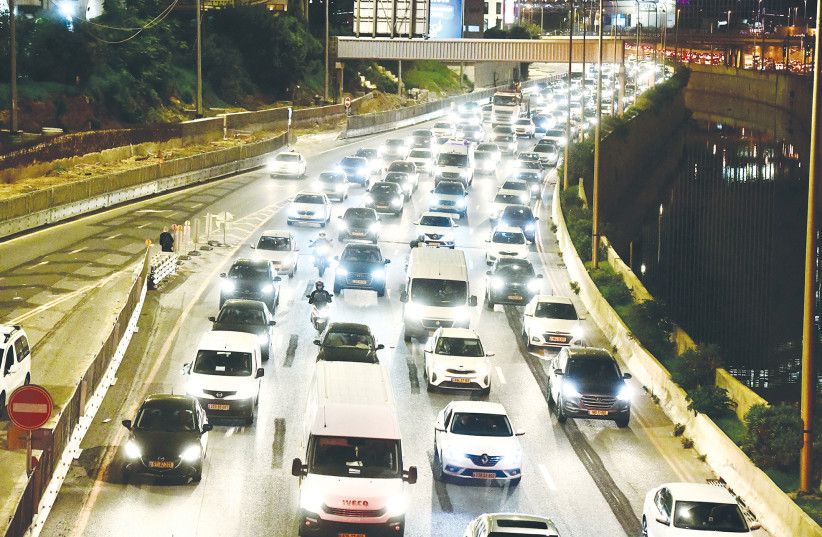Israel falls far behind Western countries in everything related to transportation infrastructures and effective mass transit systems.
The data speaks for itself: the average public investment in public transportation in Western countries is set at $15,000 per capita. The average investment in public transportation in Israel amounts to only $2,000 per capita. Little wonder then that millions of Israelis spend long hours sitting in traffic jams, having no alternative of adequate public transportation, all so that they could get to work in the morning and return home at nightfall.
Israel’s transportation problem causes a decrease in the economy’s productivity, an immense waste of resources, as well as air pollution. Above all, it perpetuates the discrimination between the country’s center and its outlying areas in finding transportation solutions to achieve mass transit.

The debate regarding the congestion fees imposed on entering the Tel Aviv Metropolitan Area has rethrown into focus the understanding that instead of finding a comprehensive solution for the increasingly worsening problem of transportation, people are once again looking for localized quick fixes. Moreover, it once again focuses on the “Gush Dan Gridlock” and disregards the “forgotten traffic jam,” which is the plight of southern Israel’s residents.
A congestion fee imposed on entering the heart of Tel Aviv is certainly a worthwhile measure that ought to be adopted. I am all for it. It would lead more Israelis to favor public transportation over their private vehicle or to consolidate their car travel; would reduce traffic loads; and relieve the parking problem in the city. It could potentially also result in reduced air pollution.
However, a congestion fee is not the be-all and end-all. One must concurrently promote alternative mass transit solutions, augment the train and bus system, advance a suburban railway and shuttles alongside large parking lots at the outskirts of the cities, and encourage bicycling and electric scooter rentals.
It’s not just Tel Aviv that’s logjammed. Anyone who has found themselves sitting in a traffic jam for almost an hour between Rahat and Lehavim, or at Emek Sarah Junction, or at the east entrance to Beersheba during rush hours is well aware of the problem. Anyone trying to get to work in the morning or afternoon hours in the Beersheba Metropolitan Area finds themselves spending at least an hour in traffic jams in each direction.
The state spends billions of shekels on constructing infrastructures to bring the country’s outlying areas closer to its center, yet does not concern itself at all with solving the overall crisis in transportation. The state has forgotten the acute need to first deal with the transportation infrastructure in the outlying areas themselves.
While in the center of the country the state still makes various attempts to combat the traffic loads by constructing a light rail, and paving public transportation routes and shared routes, in the outlying areas roads are being constructed to connect those areas to the center of the country, but does not allow normal life in those areas themselves.
As long as no real, proper, available, efficient and cost-effective alternative exists both in Gush Dan and in the outlying areas’ cities, Israeli drivers will go on favoring the use of their own private vehicles, paying fees and wasting their time sitting in traffic jams. Those who nevertheless choose public transportation will go on huddling together in tightly packed train cars and counting the minutes until the long-awaited bus trundles by the bus stop, if it ever does.
This is why the government must consider the overall picture and find a holistic solution for the problem. Alongside mitigating Gush Dan’s traffic loads, it must also promote modern and proper “intra-peripheral” transportation infrastructure, before we find ourselves facing a serious transportation crisis.
The writer is rector of SCE – Sami Shamoon College of Engineering.
